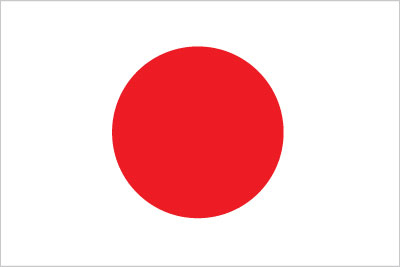A deferred payment credit, or letter of credit (LC) available by deferred payment, specifies a tenor for payment of drawings under the LC. The tenor may be stated as a set number of days from a date such as shipment or invoice date. Payments under deferred payment credits are made at the maturity of the stipulated tenor.
The aforesaid differentiates deferred payment LCs from sight payment LCs; however, the two are not merely opposites. Apart from deferred payment credits, non-sight payment LCs may be available by acceptance and negotiation.
Deferred payment, acceptance, and negotiation are each a separate method of LC availability defined in the Uniform Customs and Practice for Documentary Credits (UCP). They represent extant customs and practices of LC issuers and their correspondent banks that have developed over time. UCP requires that an LC state its method of availability, i.e. whether it is available by sight payment, deferred payment, acceptance or negotiation.
For payment at a future maturity, the methods of deferred payment, acceptance, and negotiation may be used. Key differences between the three methods are found in the acts of the nominated bank when they are available with a nominated bank:
- In deferred payment credits, a nominated bank honours by incurring a deferred payment undertaking (DPU) and paying at maturity.
- In acceptance credits, a nominated bank honours by accepting a bill of exchange (draft) drawn by the beneficiary and paying at maturity.
- In negotiation credits, a nominated bank negotiates by advancing or agreeing to advance funds to the beneficiary on or before the due date for reimbursement.
A nominated bank (NB) is a bank with whom the LC is available, apart from the issuing bank. By making its LC available with an NB, the issuing bank allows presentation to be made to the NB and undertakes to honour a complying presentation made to the NB.
Whilst an NB is not obligated to act on its nomination unless it has prior expressly agreed to do so with the beneficiary, an NB may opt to act on its nomination when it receives a presentation.
A notion exists that deferred payment credits are issued for the avoidance of drafts. In certain jurisdictions, stamp duty is levied on drafts, driving up the cost of LCs if drafts are used. Deferred payment credits are the most direct alternative to acceptance credits, given that in both of these methods, an NB honours a presentation by providing its promise to pay and paying at maturity. In an acceptance credit, this promise is by way of accepting a draft, whereas in a deferred payment credit, this promise is by way of a DPU.
However, deferred payment credits have likely been used most as an alternative to negotiation credits, rather than acceptance credits. Anecdotally, the majority of LCs available by negotiation call for drafts. Although the use of drafts is unnecessary for negotiation credits, banks have nevertheless called for it, likely a legacy practice that has not been revised even as the UCP has been revised over the decades.
Clearly, drafts can be avoided in a negotiation credit just as they are in a deferred payment credit. Hence, the avoidance of drafts is not relevant to the choice between a deferred payment credit and a negotiation credit.
For the issuing bank, its obligation to honour a complying presentation is the same regardless of the method of availability with an NB. The issuing bank must honour by paying at maturity if the NB does not honour or negotiate. (If the NB has honoured or negotiated a complying presentation, the issuing bank must reimburse the NB at maturity.)
When an LC is available with the issuing bank solely (i.e., there is no NB), the issuing bank has the option of only issuing its LC by deferred payment or acceptance unless it is a sight payment LC. A negotiation credit cannot be issued, as by its definition, negotiation is the act of an NB of advancing or agreeing to advance funds to the beneficiary prior to reimbursement by the issuing bank (or a confirming bank, if any). If it wishes to avoid drafts, it can only issue the credit available by deferred payment.
When an LC is available with an NB by deferred payment, the NB honours by incurring a DPU and paying at maturity. It is also authorised to purchase or prepay its DPU, i.e. to pay before maturity. When acting on its nomination, the NB adds its undertaking (in addition to that of the issuing bank) to pay the beneficiary. The effect is akin to a confirmation of the LC by the NB. Payment by the NB is without recourse to the beneficiary since it would be a discharge of the NB’s own obligation or liability to the beneficiary.
When an LC is available by negotiation, the NB negotiates by advancing or agreeing to advance funds to the beneficiary ahead of the due date for reimbursement by the issuing bank. A confirming bank must negotiate without recourse. When an NB that is not a confirming bank negotiates, it need not be akin to a confirmation if bilaterally agreed with the beneficiary that the negotiation is not without recourse.
When you would issue a deferred payment LC?
The question may be asked of whether the beneficiary has an understanding, agreement, or arrangement with the nominated bank for the NB to incur a liability on the LC by issuing its own undertaking to pay the beneficiary at maturity. If the NB is not prepared to incur a DPU, it would hardly matter to the beneficiary that the LC is available by deferred payment with the NB, as the NB is not going to act on its nomination. If however the NB is prepared to incur a DPU for a complying presentation, it would make a lot of sense to the beneficiary as it would then have a payment commitment by the NB in addition to that of the issuing bank under a complying presentation.
Flexibility in the arrangements
In regard to flexibility on the arrangements between the beneficiary and the nominated bank, availability by negotiation would appear to be the most convenient if the NB is prepared to negotiate.
If the NB is not prepared to either honour or negotiate, its role will be simply that of providing the beneficiary with a place to make a presentation, which, if complying, binds the issuing bank: if the NB is prepared to handle the presentation.
The choice of LC availability ought to be the beneficiary’s, rather than that of the issuing bank or applicant, subject of course to agreement of the issuing bank which takes its instructions from the applicant.
- Noting that drafts are unnecessary for negotiation credits, the avoidance of drafts does not serve as a consideration for preferring availability by deferred payment to negotiation, from the perspectives of both the issuing bank and applicant.
- For the beneficiary, if the NB is prepared to act on its nomination under a deferred payment credit even without confirmation, that is arguably the ideal method of availability.
- From an issuing bank’s perspective, the method of availability does not affect its undertaking to honour a complying presentation or to reimburse an NB that has honoured or negotiated.























